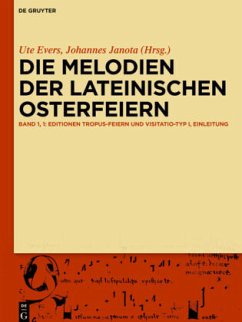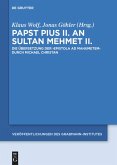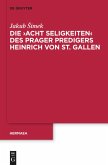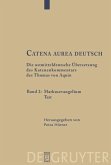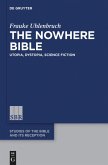This volume includes all of the Latin Easter ceremonies transmitted from the Middle Ages and the Early Modern era together with melodies that are currently known to researchers. The compendium offers a unified approach to both melody and text. It includes a total of 375 ceremonies from the 10th through the 17th centuries (and a few more recent offshoots) that originate from many parts of Europe. Each ceremony is individually edited together with a systematic commentary. Frequently, the editing has involved extensive corrections to the findings from earlier research. The findings in the individual commentaries are summarized in extensive surveys on both melody and text tradition. While the editorial research confirms the accepted typology of the ceremonies (Lange, Young, de Boor), the diversity of the findings demonstrates the need to make extensive differentiations within this basic typology. This work is sure to become a fundamental resource for research on Latin Easter ceremonies as well as the melodies from vernacular Easter and Passion plays.
Das Werk erschließt alle in der Forschung bislang bekannten, mit Melodien überlieferten lateinischen Osterfeiern des Mittelalters und der Frühen Neuzeit nach einheitlichen Gesichtspunkten durch Editionen und Kommentare. Auf beiden Ebenen werden Melodie- und Textüberlieferung erstmals als Einheit angesehen. Das Korpus umfasst 375 Feiern des 10. bis 17. Jahrhunderts (und einige jüngere Ausläufer), die nahezu aus ganz Europa stammen. Jede Feier ist separat ediert und systematisch kommentiert. Dabei ergeben sich zahllose, z.T. weitreichende Korrekturen zur bisherigen Forschung. Die Ergebnisse der Einzelkommentare sind in edierten Osterfeiern zusammengefasst. Die Ergebnisse bestätigen zwar die herkömmliche Typeneinteilung der Feiern (Lange, Youg, de Boor), die Vielfalt der Befunde zeigt aber, daß innerhalb dieser Typisierung erheblich differenziert werden muss. Damit wird das Buch zu einem Grundlagenwerk zur Erforschung der lateinischen Osterfeiern, aber auch der Melodien zu den volkssprachigen Oster- und Passionsspielen.
Das Werk erschließt alle in der Forschung bislang bekannten, mit Melodien überlieferten lateinischen Osterfeiern des Mittelalters und der Frühen Neuzeit nach einheitlichen Gesichtspunkten durch Editionen und Kommentare. Auf beiden Ebenen werden Melodie- und Textüberlieferung erstmals als Einheit angesehen. Das Korpus umfasst 375 Feiern des 10. bis 17. Jahrhunderts (und einige jüngere Ausläufer), die nahezu aus ganz Europa stammen. Jede Feier ist separat ediert und systematisch kommentiert. Dabei ergeben sich zahllose, z.T. weitreichende Korrekturen zur bisherigen Forschung. Die Ergebnisse der Einzelkommentare sind in edierten Osterfeiern zusammengefasst. Die Ergebnisse bestätigen zwar die herkömmliche Typeneinteilung der Feiern (Lange, Youg, de Boor), die Vielfalt der Befunde zeigt aber, daß innerhalb dieser Typisierung erheblich differenziert werden muss. Damit wird das Buch zu einem Grundlagenwerk zur Erforschung der lateinischen Osterfeiern, aber auch der Melodien zu den volkssprachigen Oster- und Passionsspielen.

